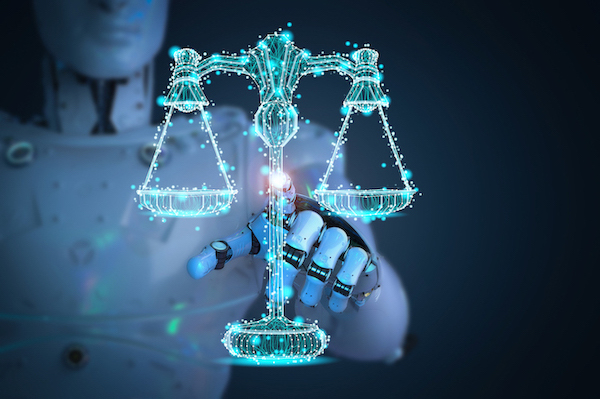What the Patent Eligibility Restoration Act Means for Artificial Intelligence Inventions
“PERA is not supposed to make AI patentable. PERA deals with Section 101 only, and the law surrounding patentability is governed by the combination of Sections 101, 102, 103 and 112. PERA cannot and should not make any type of technology per se patentable because 101 was never designed to do that.”
The Patent Eligibility Restoration Act (PERA) is no doubt an ambitious bill. In terms of its design, the proposed legislation attempts to deal with each of the Supreme Court’s decisions in Alice, Mayo and Myriad, plus all of their progeny applications thereafter engendered by the Federal Circuit, the Patent Trial and Appeal Board (PTAB), all the way down to the U.S. Patent and Trademark Office (USPTO) examining corp. In a nutshell, the bill, if passed, would return us to a time when Bilski was the law of the land, which will no doubt be welcomed by many innovators.
As is the case with many ambitious endeavors, there will be those who doubt its value. In this case, there are critics who are doubtful of the bill’s effectiveness when it comes to patenting artificial intelligence (AI). Since Alice v. CLS Bank, the high likelihood of an AI invention being found to be directed to an abstract idea has created the worrisome possibility of precluding an entire field capable of generating worlds of foundational technology from patentability. Indeed, it is hard to fathom a world where things like the Star Trek computer, with its endless knowledge base and control capabilities, could be patent ineligible, but that is where we are at present because the very thing that makes AI so useful is its abstract nature, which often defies concrete characterization. One of the most challenging aspects of claiming AI effectively in order to capture its commercial value requires a heavy reliance on functional computer language rather than traditional positive machine or apparatus claiming, as these components are vulnerable to very easy design arounds when it comes to practical AI deployment.
Because PERA would eliminate the foundations of the Alice 2A/2B abstract idea analysis that has proven to be a death knell to many AI claims, there is no doubt that PERA would make things better—perhaps too much, so that it is hard to envision it being enacted as written—especially when some on the pro-patent side want even more. Let us break down how PERA addresses Alice and Mayo and the bill’s impact on subject matter eligibility, particularly the eligibility of artificial intelligence.
Eliminating Step 2A – Judicial Exceptions
The first step of Alice’s subject matter eligibility test is determining “whether the claims at issue are directed to a patent-ineligible concept.” As adopted by the Federal Circuit, under the Mayo/Alice test, the court has assessed whether the claims are directed to a law of nature, natural phenomenon, or abstract idea.
It is under this prong that so much discretion resides on the part of the fact-finder, that is the judge, the PTAB panel or the examiner. Because Alice and Mayo courts failed to establish any test or guideline for how to determine “directed to”, a claim of any form can ultimately be determined to be directed to an abstract idea or law of nature. And that is precisely what has happened, with subjectivity reigning supreme.
Hard to believe that any claim can be found to be directed to one of the so-called judicial exceptions? Look no further than American Axle v. Neapco, where the Federal Circuit literally said the following words: “A claim to a method of manufacturing can be directed to a natural law.” While we have to live with this language, the reality—as if that matters—is the Federal Circuit is wrong. 2+2 does not equal 5 no matter how many times it is repeated, which is essentially the logic behind saying a method of manufacturing can be directed to a natural law.
Not that it matters, but the representative claim of American Axle recited:
“A method for manufacturing a shaft assembly of a driveline system, the driveline system further including a first driveline component and a second driveline component, the shaft assembly being adapted to transmit torque between the first driveline component and the second driveline component, the method comprising…”
Who cares, right? This practice of reformulating what a claim is directed to such that it is ultimately directed to judicially-created patent ineligible subject matter runs afoul of the literal language of the Section 101 statute, which states, “whoever invents or discovers any new and useful process… may obtain a patent therefor.” But we all know what happened after this point and American Axle is stunningly part of the landscape of the law governing subject matter eligibility. In the patent world, at least as it relates to eligibility, 2+2 does currently equal 5.
How has the PTAB proceeded with this “directed to” discretion?
In Ex parte PHILIP E. VASEY (Appeal 2022-001109), the panel stated the following:
“Claims 22, 46, and 52 are independent. Claim 22 recites an apparatus, claim 46 recites a method, and claim 52 recites a computer program stored on computer readable media. We analyze claim 46 as representative. . . The claimed steps of ‘evaluating the first rule based on first inputted information to generate a partially customized document comprising the compulsory content elements, the first symbol element, the second rule, and the second symbol element’ and ‘subsequently generating a fully customized document from the partially customized document, without reference to the document template, by evaluating the second rule based on second inputted information’ can be performed in the human mind.
So, here’s what happened in Vasey. While the applicant presented a combination of apparatus, computer program/computer media and method claims, the board took the method claim as representative, which was thereafter determined to be directed to a mental process. As a result, the claimed apparatus and the entire computer program/media ended up being directed to a mental process. That’s right. An apparatus is really directed to a mental process.
Ex parte appeal decisions like Ex parte PHILIP E. VASEY are rarely the focus of any press attention. But it is illustrative of the discretionary authority exercised at the PTAB with respect to the Alice 2A/2B analysis.
PERA deals with Alice Step 2A in Section 2.5:
“Under this Act, and the amendments made by this Act, the state of the law shall be as follows:
(A) All judicial exceptions to patent eligibility are eliminated.
(B) Any invention or discovery that can be claimed as a useful process, machine, manufacture, or composition of matter, or any useful improvement thereof, is eligible for patent protection, except as explicitly provided in section 101 of title 35, United States Code . . .”
That is, when judicial exceptions are eliminated, the practice of determining whether a claim is directed to a judicial exception is eliminated as well. The bill then goes further in Subparagraph (B) to reiterate the original intent of Section 101, which is that an invention or discovery that is claimed as a useful process, machine, manufacture or composition of matter is eligible for patent protection. The question of what a claim is directed to should always have remained in this scope – is it a process, machine, manufacture, or composition of matter? If yes, then it is patent eligible. Judicially created exceptions to this were always in violation of the original Section 101 law and PERA returns us to basics.
Eliminating Step 2B – No more Well-Understood, Routine and Conventional Analysis
The “something more” prong of Alice is simply out under the bill, as set forth in Section 3.C:
In determining whether, under this section, a claimed invention is eligible for a patent, eligibility shall be determined—
(A) by considering the claimed invention as a whole and without discounting or disregarding any claim element; and
(B) without regard to—
(i) the manner in which the claimed invention was made;
(ii) whether a claim element is known, conventional, routine, or naturally occurring;
(iii) the state of the applicable art, as of the date on which the claimed invention is invented; or
(iv) any other consideration in section 102, 103, or 112.
The fact that the bill bothers to mention that the factfinder is not to consider the state of the applicable art in subparagraph (iii) might not end up affecting matters much. The whole problem with implementing a well-understood, routine and conventional question in Section 101 is that Section 101 does not provide any basis for the establishment of an evidentiary standard using applicable art. What is the factfinder referencing when determining that the invention is well-understood, routine or conventional? Section 101 is silent with respect to an evidentiary basis for this assessment, which astonishingly leads to determinations about what was well-understood, routine and/or conventional being made without any reference to any prior art. It is antithetical to the patent laws to make a determination about what is known without the focus of the inquiry being on the prior art. But when 2+2=5 there is no need for logic, or reason. 2+2=5 because we are told it equals 5, not because it actually does.
And that is the essence of what PERA does – the bill moves these considerations clearly to Sections 102, 103 and 112, where the matter of what is conventional or routine can be fairly assessed using evidence in the form of cited art and references. PERA does what Diamond v. Diehr commanded, which was to allow the other parts of the statute to do the work for which they were designed and not to allow Section 101 to become a single patentability inquiry. So, in this regard, PERA returns us not just to Bilski, but to Diehr and Diamond v. Chakrabarty too.
Contrary to what some may believe, PERA is not supposed to make AI patentable. PERA deals with Section 101 only, and the law surrounding patentability is governed by the combination of Sections 101, 102, 103 and 112. PERA cannot and should not make any type of technology per se patentable because 101 was never designed to do that. What PERA does is compel a fair assessment of AI and other technologies under the rightful statutes where the citation of evidence and articulated reasons are used for the assessment of patentability.
Essentially, AI and many other innovations would have a fighting chance, with patentability governed by whether the innovation is unique when compared with the prior art. That is a win for innovators, as well as a win for fact-based fairness.






